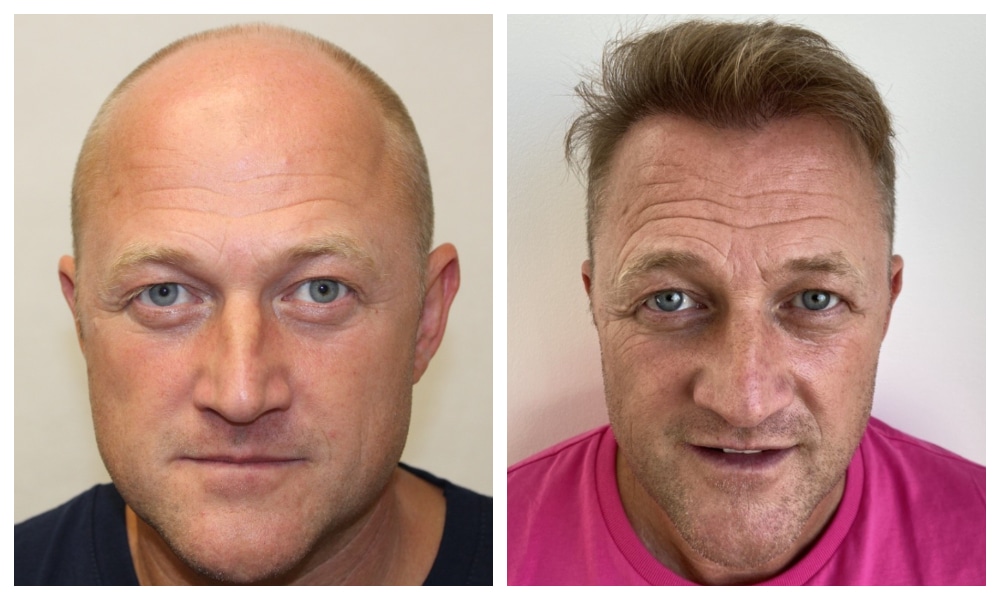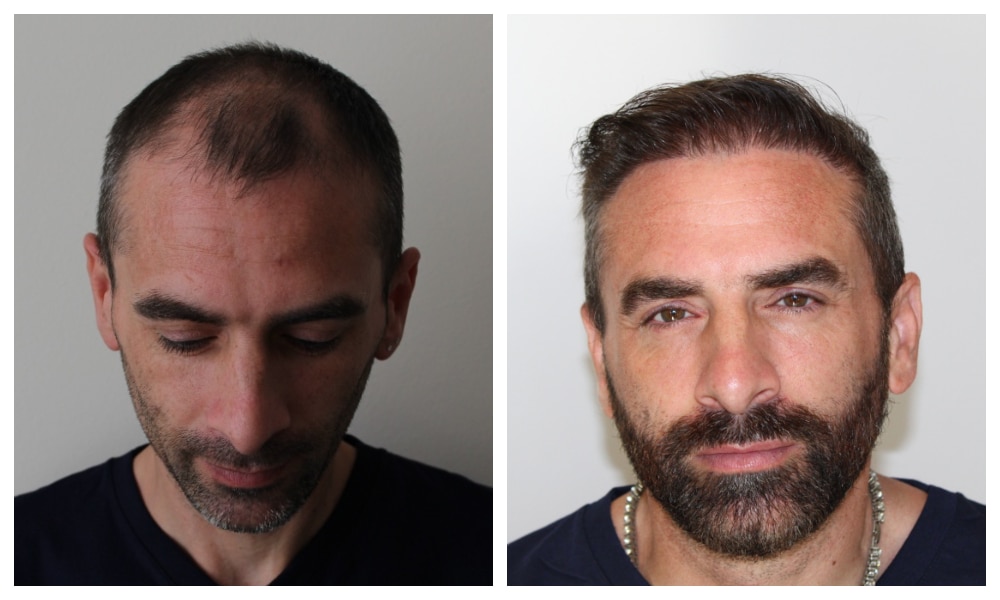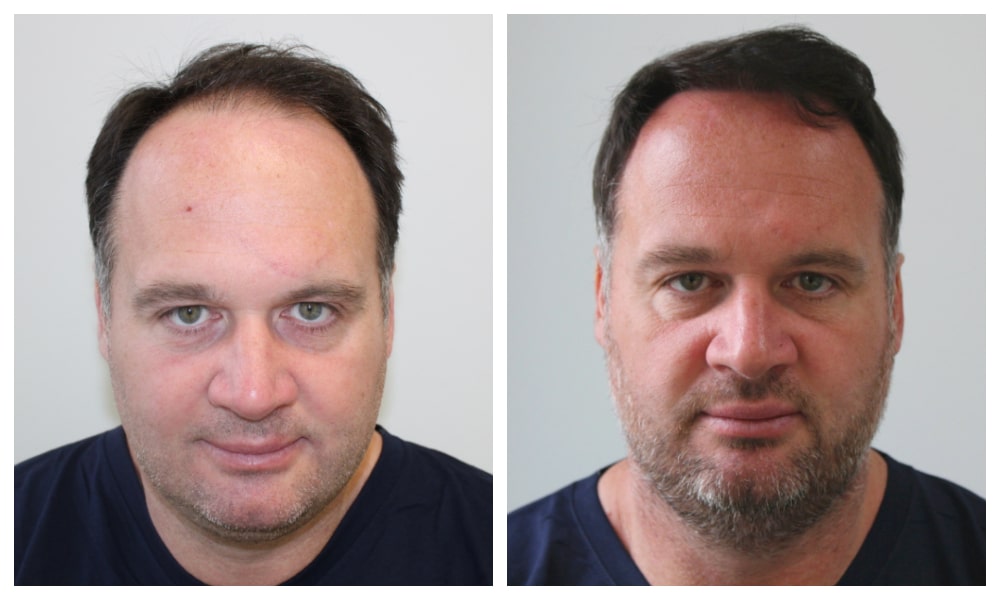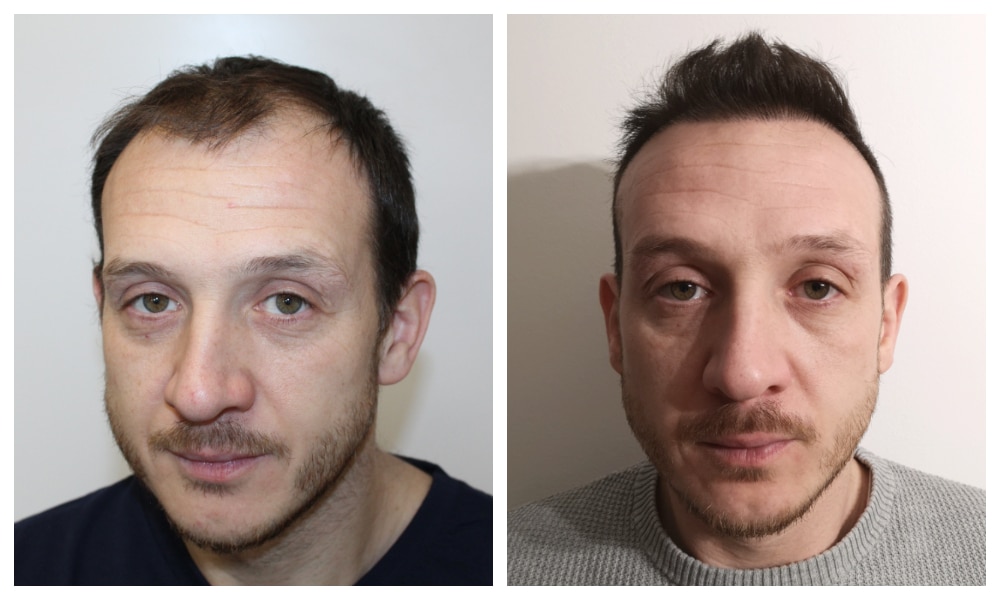Mens Hair Transplant: What to Know
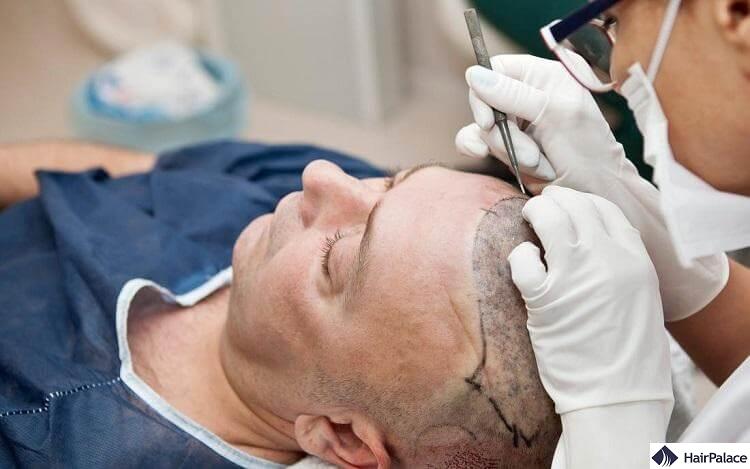
A men’s hair transplant is a surgical procedure that involves moving hair follicles from a donor area, typically the back or sides of the scalp, to balding or thinning areas.
The most common techniques used for male hair restoration are Follicular Unit Transplantation (FUT) and Follicular Unit Extraction (FUE).
Surgery can effectively restore hair density, improve hairline appearance, and boost self-confidence, with results that are natural-looking and permanent.
It is estimated that a staggering two-thirds of men will experience some noticeable hair loss by age 35.
A hair transplant can permanently correct years of hair loss with just one simple procedure.
But is surgery the right choice for you? And if so, what can you expect?
This article will take you step-by-step through how the surgery works and compare the different techniques available.
- What is it
- Who is a good candidate
- Methods
- Before and after
- Cost
- How to pick your doctor
- When will you see results?
- Alternatives
What is a male hair transplant?
A hair transplant is a surgical procedure that, in simple terms, sees a surgeon remove follicles from one part of your scalp and implant them into areas suffering from hair loss.
It is one of the most effective treatments in combating hair loss conditions like male pattern baldness.
This is because male pattern baldness is caused by the sex hormone dihydrotestosterone, DHT, which shrinks hair follicles over time to such a degree that they become dormant.
While DHT can affect and cause hair loss across the top of your scalp, hair around the sides and back are often DHT-resistant.
These areas are usually the perfect donor sites to extract healthy, resilient hair.
Hair surgery for men is straightforward, minimally invasive, and promises quick recovery and long-lasting results.
A skilled surgeon will ensure that hair is positioned in such a way as to create a natural-looking hairline that blends perfectly with your existing hair.
Who is a good candidate for a mens hair transplant UK?
Doctors will use the Norwood Scale to determine and diagnose your current state of hair loss.
Stage 2 and beyond means you should make a good candidate for a hair transplant procedure.
The most important thing to ensure is your timing. You don’t want to get a men’s hairline transplant too soon or too late.
If you get your hair transplant too early and your hair loss progresses, you risk requiring additional surgeries to correct hair loss.
This is because transplanted follicles might not blend perfectly into your ever-changing existing hair.
If you wait too long, you may not have sufficient donor hair at the back and sides of your head to properly cover your balding areas.
That said, many men find they make ideal candidates for hair transplant surgery during their initial consultation.
Two types of hair transplants
Hair transplantation surgery has become one of the most innovative procedures in the cosmetic industry.
The two most popular and available techniques are Follicular Unit Transplantation (FUT) and Follicular Unit Extraction (FUE).
Below we’ll explore the differences between each type of hair transplant for men:
FUT procedure
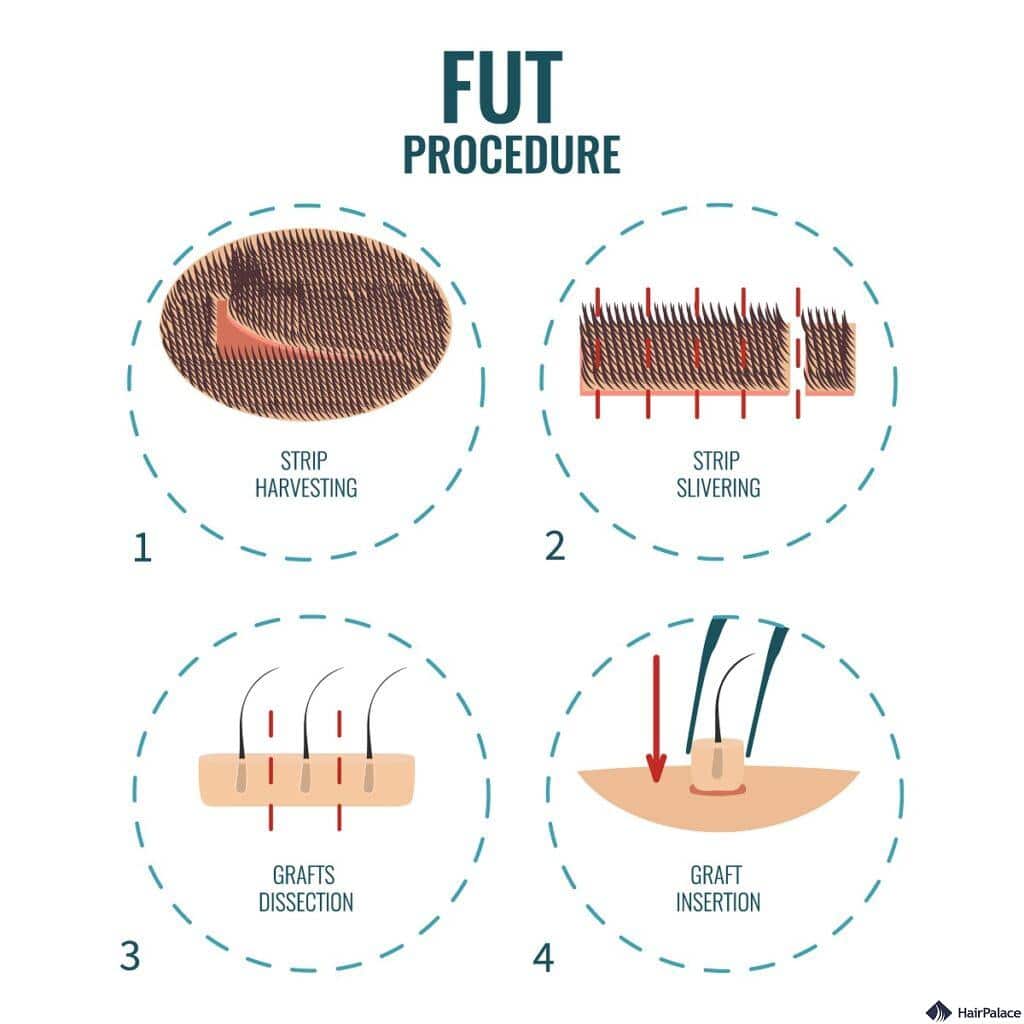
Also known as strip hair transplantation, this technique sees your surgeon remove a thin strip of tissue from the donor area of your head.
Hair follicles are then removed individually from tissue and implanted directly into balding areas of your scalp.
There are some benefits to FUT transplantation, including its ability to transplant a large number of hair follicles in one session.
Mens hair transplant cost for a FUT surgery is also significantly lower than rival techniques.
That said, a FUT hair transplant often will leave a noticeable scar where the strip of tissue has been removed, especially if you keep very short hair in that region.
And because it is invasive, a slightly longer hair transplant timeline is involved.
FUE procedure
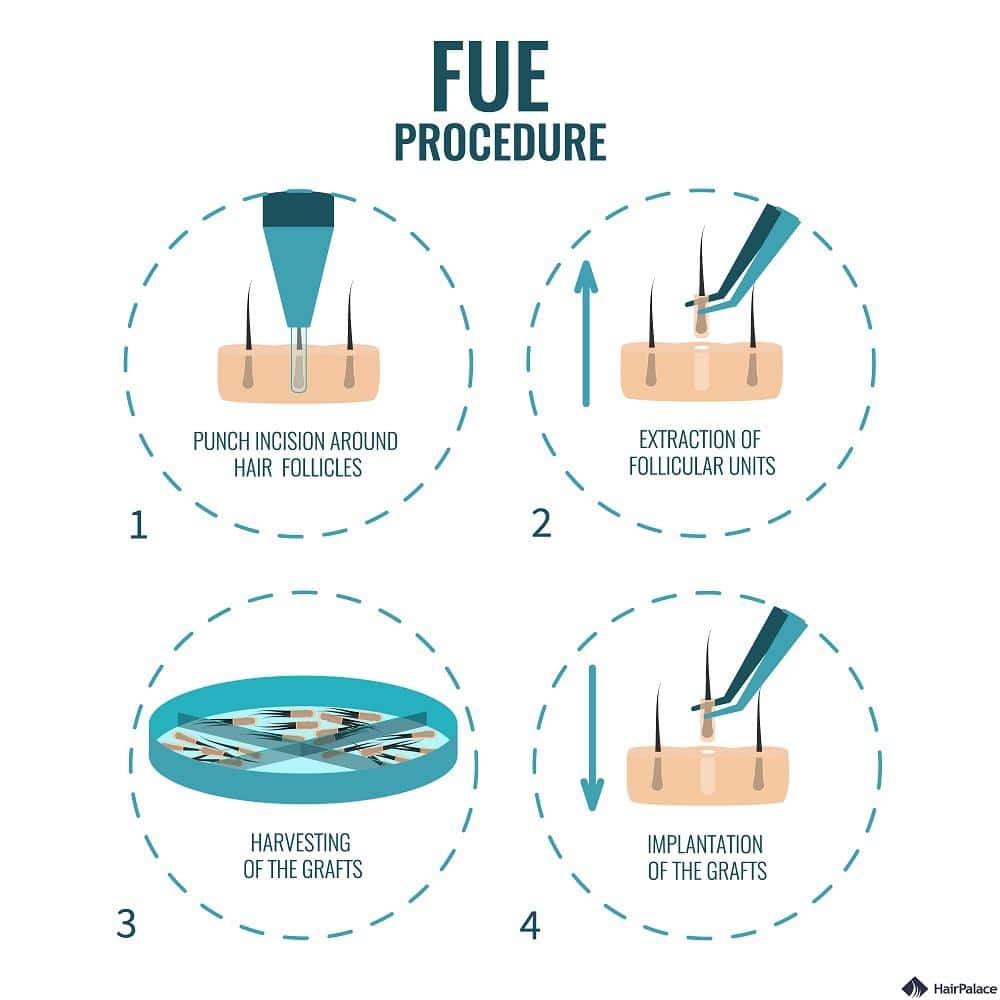
The other technique you might consider is FUE, which is widely considered the best mens hair transplant technique.
Your surgeon will extract individual hair follicles directly from the donor area with a specialized tool. There are no stitches or removal of tissue.
Follicles are specially prepared and then implanted directly into areas suffering hair loss.
FUE is arguably the most popular choice for many reasons. Firstly, it is much less invasive than FUT and will leave little scars that heal over time.
Once the transplanted hair has grown, your surgery will be virtually undetectable.
Secondly, the surgery promises a potentially quicker recovery and hair growth. No stitches in the donor area ensure you can return to your everyday activities quickly.
These benefits come at a cost, and an FUE hair transplant will usually cost you more than rival techniques.
Which method is better?
Because it is minimally invasive, promises a quicker recovery, and leaves virtually no visible scars, the follicular unit extraction technique is often the go-to method for men’s hair restoration.
On the other hand, FUT is more invasive, demands a longer recovery time, and will leave a noticeable linear scar across the donor site.
Ultimately, your surgeon will be able to explain the pros and cons of each method, and after examining your scalp, they will recommend the technique they think will offer you the best outcome.
Mens hair transplant before and after
Take a look at these stunning male hair transplant before and after photos!
Hair transplant cost
Mens hair transplant UK price can vary from clinic to clinic, but you can generally expect a hair transplant procedure to cost between £3,000-£15,000.
The figure can depend on the extent of your hair loss and the number of hair grafts required during your surgery.
We recommend that you research hair transplant surgeons thoroughly to ensure you find the best quality for the lowest male hair transplant cost.
Experienced surgeons often will be more expensive, but given how long-lasting and effective a hair transplant can be, the extra money will be worth it.
Ask clinics about potential payment plans to help space out payments and minimize hair transplant costs.
How to find the right doctor
Appearances matter, especially when a hair transplant is considered.
Only by finding the best clinic and doctor can you expect the best, natural-looking results.
Therefore, we highly recommend researching different clinics and doctors and comparing them regarding experience, qualifications, patient results, and aftercare.
Here are some tips on how to find the best doctor for your upcoming procedure:
- Recommendations: The first and easiest thing to do is ask friends, family, or co-workers who’ve undergone a hair transplant about their experiences.
- Research: Ensure your doctor will be board-certified in hair restoration and have training in the latest techniques and equipment.
- Results: The best doctors will often have before and after galleries on their clinic’s website, which can be a great testament to their skill and the results you can expect.
- Consultation: During the initial consultation the clinic will examine your hair, discuss any concerns, and talk you through the treatment plan.
- Ask questions: The best doctors will be willing to answer all your questions, including their qualifications, experience, techniques, and what kind of aftercare and recovery you should expect.
When can you expect to see results?
Like any medical procedure, the results of a hair transplant can vary from patient to patient.
In most cases, transplanted follicles will begin to produce brand-new hair within three months of your surgery.
Their progress can be slow, as it can take up to nine months to see new hair growth in implanted areas.
The original hair surrounding the transplanted hair may fall out or begin to thin during this time.
Depending on the rate at which they lose hair, some people may require touch-up sessions.
Ultimately, it’s recommended that you wait at least 12 months for the transplant’s final results to materialize. Be patient – the wait will be worth it!
You may have delayed results if you’ve had a poor recovery or suffered slight complications from surgery, including a swollen scalp, allergic reaction, or severe scabbing.
There’s also the chance the transplant doesn’t take and hair falls out, which you must consider.
Alternative treatments for hair restoration surgery
While hair transplants can correct a whole range of hair loss problems, it is vital to remember that they are not the only option for you to consider.
It is often recommended that men suffering from hair loss try an alternative over-the-counter treatment first to see if they provide much relief.
These can range from haircare products such as medical shampoos and topical serums to vitamin and mineral supplements like Biotin and Nutrafol.
You may also consider drugs like Minoxidil and Finasteride, which can help stop the progression of hair loss, though they may cause severe side effects that you need to consider.
Though research is ongoing on their efficacy, non-surgical therapies like low-level laser therapy or Platelt-rich plasma injections (PRP) can also be promising remedies for hair loss.
Many of these alternatives are temporary fixes and may not be effective against permanent baldness.
You must apply serums and take medication regularly or attend follow-up appointments to maintain any results.
FAQ
The cost of a male hair transplant in the UK typically ranges from £3,000 to £9,000, depending on the clinic and number of grafts.
Last medically reviewed on March 24th, 2025
- Gupta AK, Danika CA et al. “Progression of surgical hair restoration techniques.” J Cutan Med Surg.
- Kerure AS, Patwardhan N. Complications in Hair Transplantation. J Cutan Aesthet Surg. 2018 Oct-Dec;11(4):182-189https://pubmed.ncbi.nlm.nih.gov/30886471/
- Bicknell LM, Kash N, Kavouspour C, Rashid RM. Follicular unit extraction hair transplant harvest: a review of current recommendations and future considerations. Dermatol Online J. 2014 Mar 17;20(3)https://pubmed.ncbi.nlm.nih.gov/24656268
- Rose PT. Advances in Hair Restoration. Dermatol Clin. 2018 Jan;36(1):57-62https://pubmed.ncbi.nlm.nih.gov/29108547
- Gupta AK, Mays RR, Dotzert MS, Versteeg SG, Shear NH, Piguet V. Efficacy of non-surgical treatments for androgenetic alopecia: a systematic review and network meta-analysis. J Eur Acad Dermatol Venereol. 2018 Dec;32(12):2112-2125https://pubmed.ncbi.nlm.nih.gov/29797431

